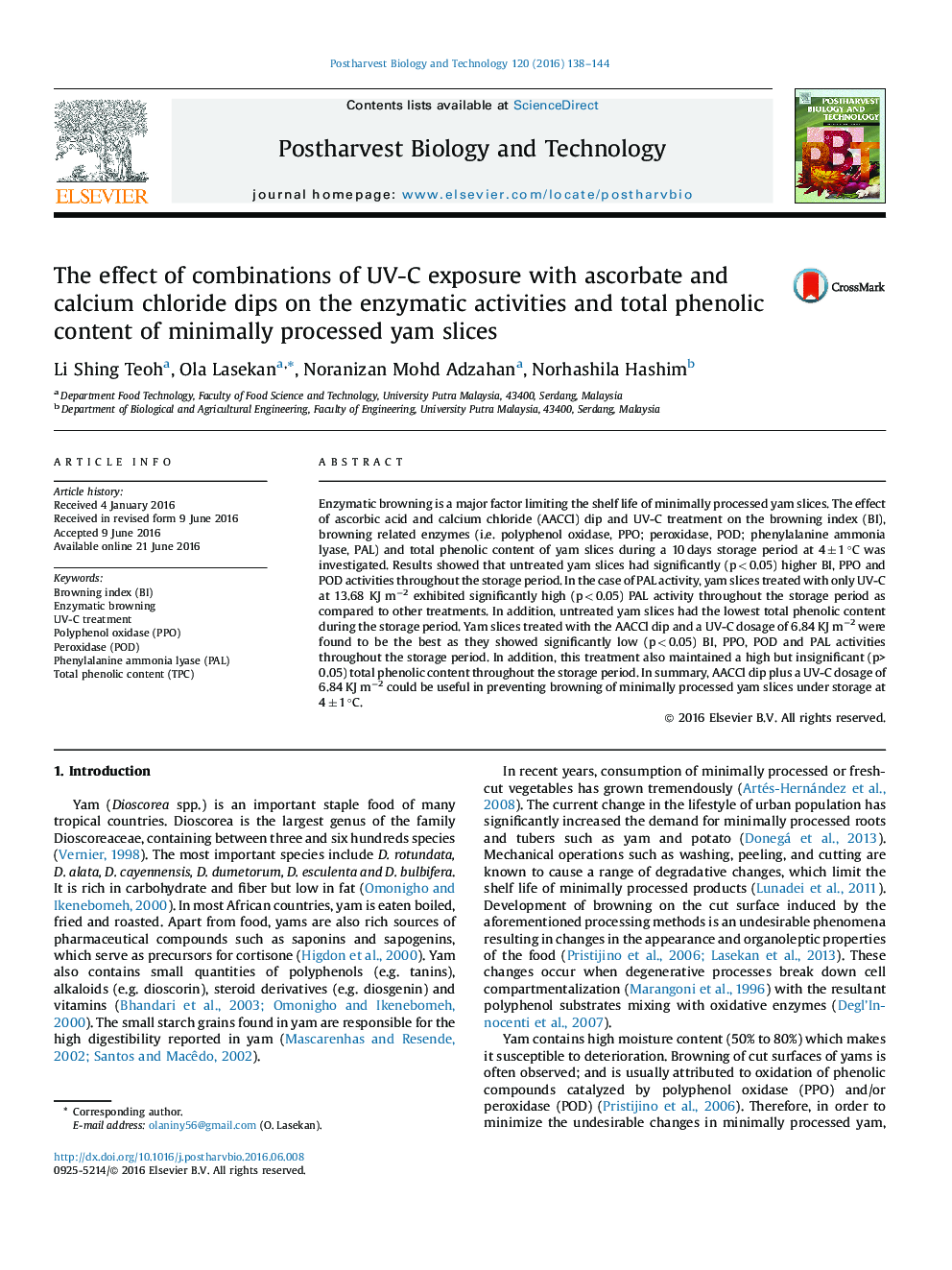| Article ID | Journal | Published Year | Pages | File Type |
|---|---|---|---|---|
| 4517736 | Postharvest Biology and Technology | 2016 | 7 Pages |
•Enzymatic browning in cut yam (D. rotundata) was studied.•Ascorbic acid plus calcium chloride (AACCl) dip was ineffective against browning.•Combinations of AACCl dip and UV-C at moderate doses effectively controlled browning.•Total phenolic content was effectively controlled with AACCl dip and UV-C at moderate doses.
Enzymatic browning is a major factor limiting the shelf life of minimally processed yam slices. The effect of ascorbic acid and calcium chloride (AACCl) dip and UV-C treatment on the browning index (BI), browning related enzymes (i.e. polyphenol oxidase, PPO; peroxidase, POD; phenylalanine ammonia lyase, PAL) and total phenolic content of yam slices during a 10 days storage period at 4 ± 1 °C was investigated. Results showed that untreated yam slices had significantly (p < 0.05) higher BI, PPO and POD activities throughout the storage period. In the case of PAL activity, yam slices treated with only UV-C at 13.68 KJ m−2 exhibited significantly high (p < 0.05) PAL activity throughout the storage period as compared to other treatments. In addition, untreated yam slices had the lowest total phenolic content during the storage period. Yam slices treated with the AACCl dip and a UV-C dosage of 6.84 KJ m−2 were found to be the best as they showed significantly low (p < 0.05) BI, PPO, POD and PAL activities throughout the storage period. In addition, this treatment also maintained a high but insignificant (p> 0.05) total phenolic content throughout the storage period. In summary, AACCl dip plus a UV-C dosage of 6.84 KJ m−2 could be useful in preventing browning of minimally processed yam slices under storage at 4 ± 1 °C.
